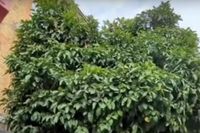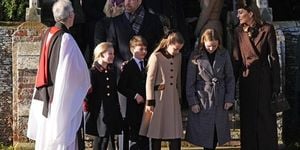On a quiet stretch of Queenstown Road in Battersea, South-West London, a rare and beloved grapefruit tree now stands as both a botanical oddity and a testament to community spirit. This week, the tree received a Tree Preservation Order (TPO) from Wandsworth Council, ensuring its protection for generations to come. The move comes after a heartfelt campaign by local residents, following the recent passing of Marline Anderson, the woman who first planted the tree decades ago.
The grapefruit tree, now a local landmark, is one of only a handful found growing outside the famed Kew Gardens in the United Kingdom. Its story begins in the 1980s, when Anderson, then a resident of Queenstown Road, brought a sapling all the way from her native Grenada. She planted it in the front garden of her Battersea home, perhaps never imagining the legacy it would leave behind.
According to Wandsworth Council, the decision to grant the TPO was made on August 7, 2025. The council described the tree as a “beloved local landmark,” noting its significance not only as a botanical rarity but also as a symbol of the area’s rich cultural tapestry. Kemi Akinola, deputy leader of Wandsworth Council, told The Independent, “We were very pleased to grant the TPO and ensure that this beloved local landmark stands for generations to come. Marline was much loved by her neighbours and we're proud to have listened to the wishes of the community. In our year as London borough of culture, it's great to recognise the contribution that people of African and Caribbean heritage have made to Wandsworth.”
The council’s move was prompted by a groundswell of support from Queenstown Road residents. After Anderson’s death in June 2025, neighbours quickly rallied to protect the tree in her memory. There had been concerns that, without formal protection, the tree might be at risk of being cut down—an outcome that would have been devastating for those who treasured it. Their efforts paid off, and the TPO now shields the tree from any unwanted removal or harm.
To further honor Anderson’s legacy, neighbours installed a plaque at the base of the tree. The plaque features a gentle reminder in Anderson’s own words: “Kindly refrain from picking from the tree. You are welcome to gather what nature has let fall.” The quote reflects Anderson’s generous spirit and her desire to share the fruits of her labor—quite literally—with the community, while still protecting the tree itself.
Vasilisa Ermakova, Anderson’s friend and neighbour, spoke to the BBC about the importance of the plaque. “Her last wish was for me to do a plaque on the tree to say where it's from, and why she planted it,” Ermakova explained. The gesture has resonated with locals, many of whom remember Anderson not just as the tree’s caretaker, but as a beloved member of the neighbourhood.
The grapefruit tree’s survival is remarkable for another reason: the British climate is not exactly known for being friendly to tropical plants. The Royal Horticultural Society (RHS) notes that citrus plants like grapefruit trees rarely survive the winter outdoors in the UK, even in the warmest corners. Typically, such trees require the shelter of a greenhouse to weather the cold months. Yet, against the odds, Anderson’s tree has flourished in Battersea, bearing fruit all year round and serving as a living testament to resilience and adaptation.
The RHS describes grapefruit trees as producing “fragrant white flowers, glossy evergreen leaves and juicy, tangy fruits.” Some varieties, according to the horticultural authority, can flower year-round, while others bloom in late winter, with their fruit ripening slowly over the course of up to a year. The tree on Queenstown Road seems to have found its own rhythm, offering fruit to the community in every season—a rarity in this part of the world.
The TPO granted by Wandsworth Council is more than just a bureaucratic safeguard. Tree Preservation Orders are legal tools used to protect trees or woodlands that make a significant impact on their local surroundings. According to the council, these might be specific trees or entire woodlands considered important to the local environment, landscape, or public amenity. In this case, the grapefruit tree ticks all those boxes: it’s a visual landmark, a source of community pride, and a living link to the area’s multicultural heritage.
The story of the Queenstown Road grapefruit tree is, in many ways, a microcosm of London itself—a city where people from around the world plant roots and contribute to the rich tapestry of local life. The tree’s presence is a reminder of the contributions made by people of African and Caribbean descent to the borough of Wandsworth and to London as a whole. As Akinola noted, the council’s decision to protect the tree comes during Wandsworth’s year as London borough of culture, a time when the area is celebrating its diversity and history.
The campaign to save the tree also highlights the power of local activism. In a city where development pressures can sometimes threaten green spaces and historic sites, the successful effort by Queenstown Road residents shows what can be achieved when a community comes together for a common cause. Their determination ensured that Anderson’s legacy—and the tree she so lovingly tended—will endure.
It’s not just about preserving a rare plant, though that’s certainly part of it. The grapefruit tree has become a symbol of continuity and hope for the people of Battersea. It stands as a reminder that even in a bustling metropolis like London, there’s room for stories that connect past and present, nature and culture, individual dreams and collective action.
For now, the Queenstown Road grapefruit tree continues to thrive, its branches heavy with fruit and its roots firmly planted in the soil of South-West London. Thanks to the efforts of a caring community and the support of local authorities, it will remain a cherished part of the neighbourhood for years to come.
Some trees are just trees. Others, like the grapefruit tree of Battersea, become something more—a living memory, a gathering point, a quiet miracle in the heart of the city.




